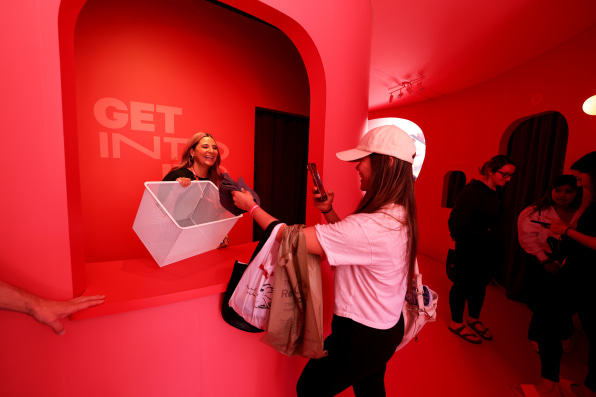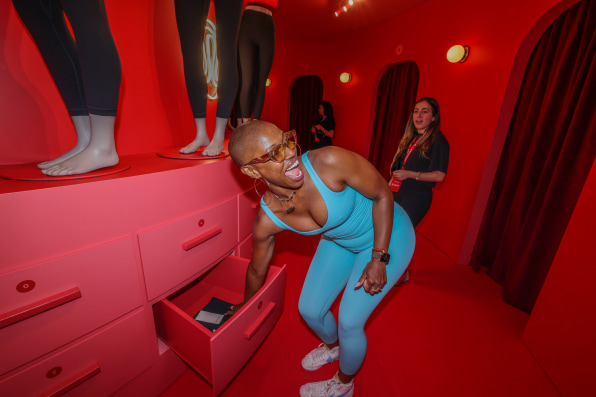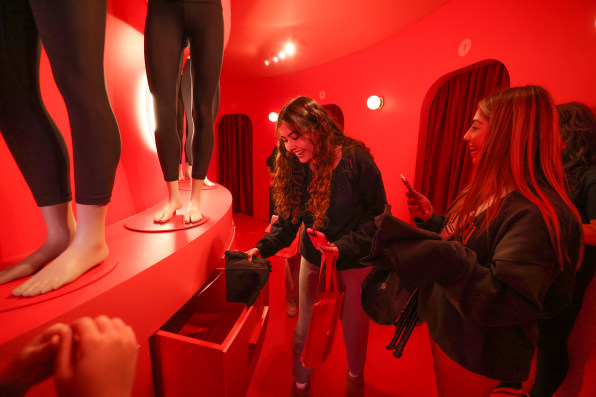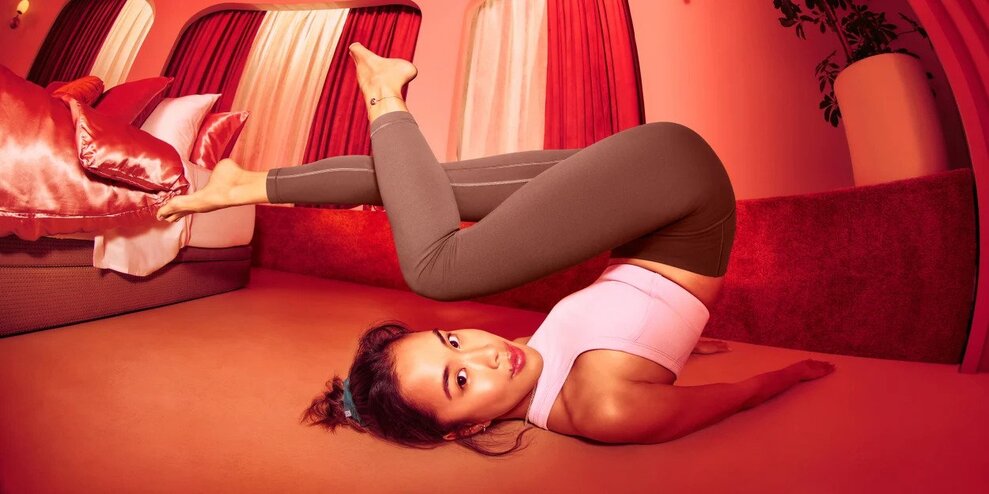Lululemon fans craved products from the beloved $50 billion athletic apparel company but have been settling for cheap alternatives. Then the company decided to deliver a big surprise.
“Hey guys, here are this month’s best-selling Amazon Lulu lookalikes, and I used to work at Lulu, so I promise you these are identical!”
In late January, TikTok user Ariana Vitale posted about products that supposedly look and feel just like Lululemon apparel—at a fraction of the cost. Vitale’s first tip was a lookalike product, or “dupe” for duplicate, for Lululemon’s Groove Super High-Rise Flare Pant. Instead of Lululemon’s retail price of $90, the dupes Vitale were hyping were $20.
Her post has more than 955,000 views.
Vitale is far from the only TikToker posting about Lululemon dupes—and dupes have become a style and trend all on their own. In the past, buying imitation products was mostly done on the sly, with an aim to pass it off as the real thing. Now, primarily among Gen Z, finding and flaunting dupes have almost become a sport, with its own media coverage. Teen Vogue posted an article in January headlined, “11 Best Lululemon Dupes on Amazon.” The hashtag #dupe has more than 3.5 billion views on TikTok, and according to Lululemon itself, the #lululemondupes hashtag has more than 150 million views.

Which is why, last weekend, Lululemon hosted a “Dupe Swap” at its store in Los Angeles’s Century City Mall, encouraging customers to bring in their knockoffs of its incredibly popular Align pants to trade in for the original.
“It felt like a very fun way to step into a cultural conversation,” says Lululemon chief brand officer Nikki Neuburger, “and part of why we had total confidence doing that is because we really do know our products are the best; and if you try them, we felt folks would have that sensory aha moment.”

Knockoffs and brand imitators have been a thing forever. As the New York Times’ Amy X. Wang pointed out last week while writing about the popularity of expertly fake luxury handbags, Sally Iselin chronicled finding knockoff Parisian ball-gown designs in Rome for The Atlantic in 1951.
Even Neuburger hasn’t always been immune. “I remember my first trip to New York in high school,” she says, “and seeing the people selling every imaginable knockoff purse brand, and I was so excited.”

Instead of ignoring or fighting culture, Lululemon’s decision to engage with it directly through the Dupe Swap is both a gesture to bring new people into their stores and a wager that many will see, feel, and recognize the difference between the dupes and the real Align pants. It’s also a shrewd referendum on the power of brand itself, and the kind of bet every brand should be prepared to take.
The idea for the Dupe Swap came out of internal discussions on how to bring to life Lululemon’s new campaign around its Align product franchise—dubbed “Get Into It”—on various platforms. When it came to TikTok, dupes were top of mind.
Neuburger says that tagline carries a double meaning of trying new things and being active, but also getting into the pants themselves. At the event, the people who lined up at the mall to swap their dupes were first guided into a custom-designed room—made to mimic the bedroom of brand ambassador Naomi Yeo, which appears at the very start of the “Get Into It” spot. “The swap was very consistent with and tied into the overall campaign,” says Neuburger.

When I spoke to Marcus Collins last week, the University of Michigan marketing professor and head of strategy at Wieden+Kennedy said that the key to a brand becoming or maintaining cultural relevance was in transcending the value propositions of the products they bring to the world and finding ways to connect with people based on who they are. Nike isn’t one of the most powerful brands on the planet because its actual shoes are the best. Sure, they’re good kicks, but Nike has built an entire ecosystem around its brand—sneaker drops, artist collaborations, epic commercials, films, training tech, apps—and what it stands for. People want that swoosh on their feet not for what it says about the shoe, but for what it says about them.
“Operating at that level is the zenith of brand strength,” Collins told me. “Marketers have to get beyond the conventional wisdoms of marketing that it’s all about the product and product-consumer fit. That works on a transactional level. But if we want to get to a cultural level, it’s about conviction and conviction fit.”
Last fall, Liquid Death announced new funding that valued the company at $700 million. Its 2022, revenue exceeded $100 million, up from $45 million the year earlier, and the company expects that to double this year. And yet CEO Mike Cessario told me last October that Liquid Death’s primary product isn’t water of any kind. “At the end of the day, we’re a brand more than we’re a water company,” Cessario said. “The reason people buy Liquid Death and the merch has nothing to do with how many electrolytes our water has or what the pH level is.”
That’s the power of brand—and having a specific perspective or point of view. If a brand has invested enough effort in that, it’s in a better position to wade into culture confidently when the opportunity is there. Neuburger knows this and says that Lululemon’s brand positioning consists of its product value proposition and pricing strategy; but perhaps most importantly, its personality, values, and the types of people or community it attracts.
“Every customer touchpoint, from an email to in store to product names to any event we put on, people need to walk away and feel that these experiences are consistent with who we say we are,” says Neuburger. “And it should just deepen their loyalty and love for the brand.”
Lululemon’s Dupe Swap gamble isn’t blind. Despite the millions of dupe sales and content views, the Align pant is still one of the company’s top-selling products. By embracing dupe fans, the brand is banking that all the long-term work it’s done around its culture—the online and in-store communities, fitness and yoga resources, relatable brand ambassadors—and the quality of its product, will ultimately outshine the dupes and convince people to give the original a shot. Gen Z may be the ones behind the dupe trend, but according to Morning Consult, Gen Z adults spend an average of $104.50 on apparel every month, more than any other generation.

Again, it was a shrewd bet, and last weekend it appeared to work. According to Lululemon, 50% of the people who came to the swap were new customers, and half were under the age of 30. The response in L.A. and coverage across media and social media far exceeded Neuburger’s expectations, and she says that she and her team are now considering expanding the swap idea to more events in other markets.
“Dupes are going to happen, so let’s not fight it, let’s not arm wrestle,” says Neuburger. “Let’s have some fun with it, and actually really deeply understand our consumers and how they’ll actually have fun with it, too, by starting the conversation.”
—
This article first appeared in https://www.fastcompany.com
Seeking to build and grow your brand using the force of consumer insight, strategic foresight, creative disruption and technology prowess? Talk to us at +971 50 6254340 or engage@groupisd.com or visit www.groupisd.com/story




